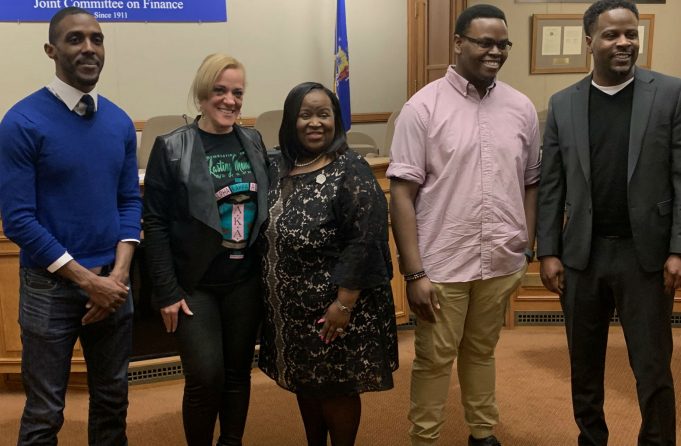The Wisconsin Legislative Black Caucus invited three Dane County professionals in education for a discussion on how to better support students and staff Feb. 22 at the State Capitol Building, one of many events in honor of Black History Month.
“In order for Black students to know Black excellence as something they can see, they have to know what it is,” Middleton-Cross Plains Area School District Director of Equity and Student Achievement Percy Brown said.
Madison Metropolitan School District Executive Director of Family, Youth and Community Engagement Department Nichelle Nichols, Middleton-Cross Plains Area School District Dean of Students Dom Ricks and Brown joined host Wisconsin State Representative Shelia Stubbs for a panel discussion about the educational challenges in Wisconsin schools moderated by Chris Barnes, a Ph.D. student in UW-Madison’s Department of Education. Brown, Nichols and Ricks talked about topics including recruitment of Black staff, police officers and school and the achievement gap.
“School districts should first look at their students’ demographics and based on their demographics, I would encourage districts to aim for ensuring that staff is reflective of the student body,” Brown said.
Brown explained how to better nurture and enrich students experiences through diversity. He also said school districts must be intentional about their work in order to increase diversity. Brown said students must see themselves reflected in the staff.
Brown, Nichols and Ricks all shared their thoughts about recruitment and retention for staff of color. Nichols said MMSD has made innovative approaches to reach beyond the state to bring some diverse talent, particularly Black talent.
“I think districts are getting better at understanding we need to be aggressive in our recruitment,” she said.
Nichols also emphasized the need for spaces to further to support staff. She said while networks exist across the city, staff still need more support for the day-to-day responsibilities.
Ricks suggested creating systems to make new staff feel comfortable in the environment. He said word of mouth travels fast when staff fears or perceive a lack of support. For example, Ricks said sometimes it can feel like a slight when staff discuss the achievement gap for Black and brown students and quickly move on to the next topic.
“It’s definitely about retention, making sure our systems are responsive and not reactive,” he said.
Brown said school districts should encourage students going through education to come back and contribute by working in the system. In a conversation about Education Resource Officers (ERO), Brown said the money from ERO’s should be reallocated to hire more people from the neighborhood that might be able to relate to the students.
Nichols said MMSD is currently exploring their contract with ERO’s. She said the public spoke out against having police officers in school and made it very clear their presence would affect Black and Brown students the most. Ricks said while having them in the building could introduce students to a potential career path or for helping students with special needs, officers are not necessary for disciplinary matters.
“I think we’re missing the ball in a huge way when we’re thinking about how we need police in our schools to keep our kids safe. That’s just not the case in my school,” Ricks said.
Brown said bringing police officers into school buildings is a response to white fear and will further harm Black students. He said hiring more community members as support staff will make students feel comfortable coming to staff about issues in the community before something happens in school.
“Now our kids are being filtered in the criminal justice system for issues that twenty years ago, they would not be filtered in the criminal justice system,” Brown said.
Nichols brought up MMSD’s behavioral education program which was designed to be restorative. She said the district has enacted the program for the last 5-6 years, however, there has been a bit of miscommunication about the idea of restorative justice to families.
“There is a premise and a belief that young people are young people and they need an opportunity to learn and adjust,” she said.
Nichols said some community members feel students have the opportunity to get away with bad behavior. She also said some staff appreciates having supplemental support from police officers in the building.
Nichols, Brown and Ricks all agreed that Black students needed a culturally affirming environment in order to excel. For Nichols, this includes educating Black students on their history and empowering them to succeed in life.
“We need to look at the power of identity, history and culture,” she said.
Nichols said while the district continues to improve, parents should continue to uplift their children. She said parents should push their children in spite of the narrative surrounding Black children.
Ricks said students of color need resources. He said there is no such thing as an achievement gap but rather a resource gap because of historical marginalization. He said the district should focus on creating spaces and programs where students’ capabilities are not predetermined by their race or background.




























